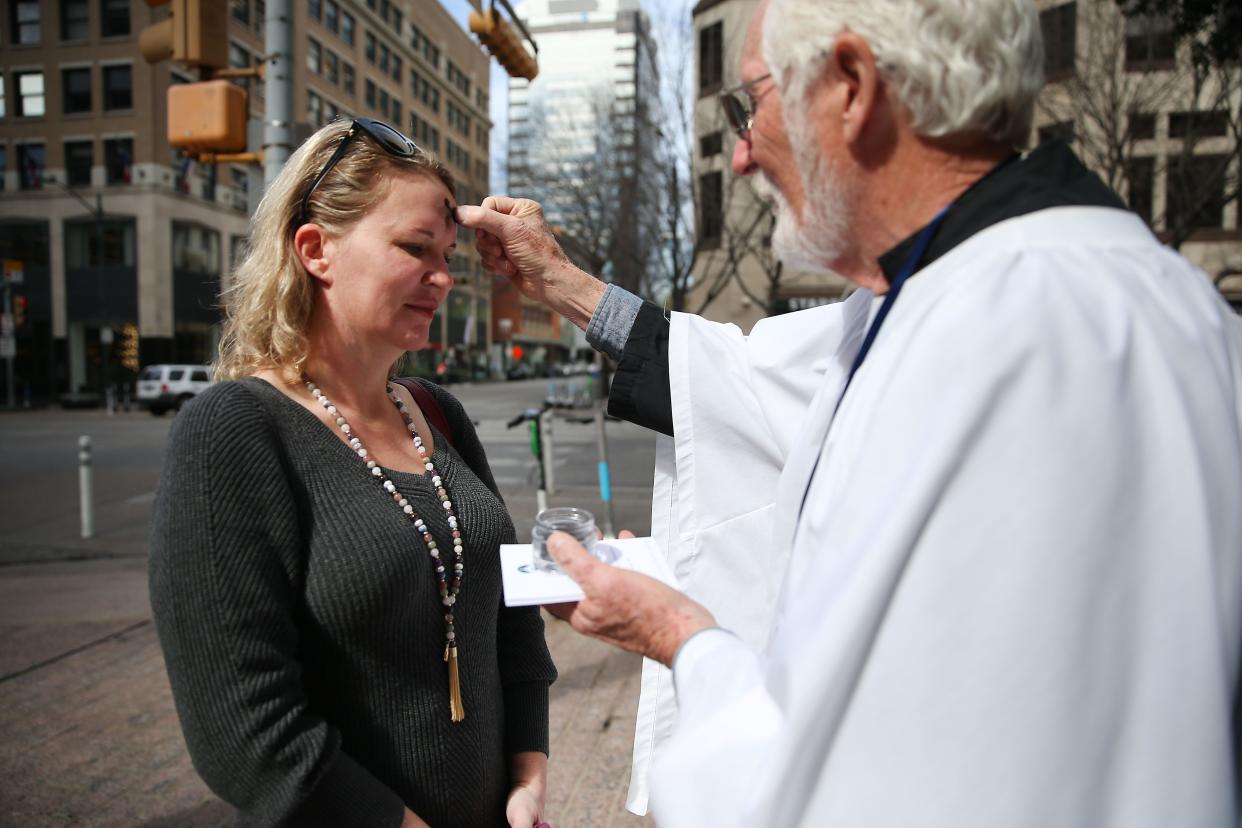Faith: Bringing comfort with the sign of the cross to those in need

It all started on Ash an Wednesday. As an authorized lay minister in my church, I was making the sign of the cross on foreheads using ashes while saying: “Remember you are dust and to dust you shall return.”
As I touched each head, I thought, “Oh God, I am not worthy. We are not worthy. Be with us now and when we are dying.”
Then one day, word got to me that Tib, manager of the Caritas Soup Kitchen in Austin was gravely ill. I knew him from visiting Caritas with St. Gabriel’s Middle School students who helped at the lunch service on a regular basis.
With no training as a hospice person and somewhat hospital-phobic, I located the intensive care waiting room and found Tib’s wife. I asked her if I could visit and pray with the family. She agreed. I had a St. Joseph prayer card (an inspired choice as Tib was a tireless worker and devoted father) and read the words. Then my hand reached up and made a sign of the cross on Tib’s forehead. This was not a conscious decision.
Being with Tib felt holy, still, I didn’t go about wanting to be with the dying, but they kept coming.
A friend called frantically from out of town. Her dad, who was Catholic, was unconscious in a new hospital on a holiday weekend. There were no priests available. I went with Catholic prayer book in hand and met two of his daughters.
We prayed. I outlined the sign of the cross on his head, and left a rosary in his room. Through none of my doing, this gentleman lives today.
The rescue squad took Beth from her tiny place in the trailer park to a nursing home as she struggled for survival and each breath with COPD. I visited her toward the end with a new soft blanket and a rosary which she had just learned to use. We prayed together as we often did and my thumb traced a cross on her forehead. Beth died sometime later.
Years ago, my adult son long lay dying, but didn’t — many desperate prayers and drawn crosses.More dying people.
Rick, my friend, a double amputee who lived under an overpass, was in intensive care. His body ravaged by dirty needles was now threatened by another limb to lose. He cursed others out, but wanted me in, to be with him. To pray with him. To touch him. To trace the cross on his head. Rick survived this crises, kept his arm; however, died later on the streets.
Some years ago, I was called to the hospital. Ian, a successful executive I knew well, was suddenly at death’s door. His posse, a group of CEO’s, were incredulous! How could this vital brilliant man be dying?
With no time, no chaplain, and no guidebook, we held hands around Ian’s bed while the machines functioned for him. I prayed from the heart with believers and non-believers and made the sign of the cross on his forehead.
Recently, Father Jim, a Dominican friar at 92 was in hospice care. Chief was my chum, my colleague. Although he was unconscious when I got to the hospital, I read the prayers for the dying aloud and outlined the cross on his forehead.
I know as an everyday laywoman, not a priest or deacon, I have no right, no authority to bless sacramentally. It's individual people — the critically ill and the dying — who allow me to be with them in what might be their final journey with a prayer, a touch and the cross.
No one should be alone, struggling to live or perhaps facing death. We are born within a small welcoming circle — family and others. We should die in a similar love circle.
Is this the Holy Spirit working through me when my thumb draws a cross on the forehead of a dying person and sometimes my fingers caress the cheek?
Is this intimate hand to head, human-to-human touch saying you are not alone?
Is this felt cross the symbol and reminder that we are loved beyond measure?
Is this this the way it was when people used to die at home?
Judy Knotts is a parishioner of St. John Neumann Catholic Church, and former head of St. Gabriel's Catholic School and St. Michael's Catholic Academy.
This article originally appeared on Austin American-Statesman: The sign of the cross, comfort as people face death, illness

